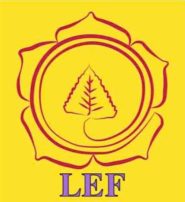Description of 1860’s area where Meadowlark Hearth Farm is located today.
For thousands of years Native American tribes inhabited this area, coming and going as climate would dictate. Nomadic hunters roamed the valley over 10,000 years ago, evolving into farmers and foragers and living mostly along the rivers, but then disappeared for a time. Around a thousand years ago, tribes came once again from the east to populate the plains but again disappeared for several centuries. In most recent history, the Cheyenne, Arapahoe, and Lakotah were the predominant tribes that lived and hunted here. These tribes were mostly nomadic and hunted buffalo for their sustenance. South of the North Platte river was the territory of the Cheyenne and Arapahoe, but the Lakotah would cross the river from the north to hunt. All these tribes, however, later fought the United States government during migration and times when treaties were being violated.
The Treaty of 1868, established at Fort Laramie, Wyoming, laid out the boundaries for what was to be known as Indian Territory and what was to be ceded to the United States. Article 16 of that treaty states:
“ The United States hereby agrees and stipulates that the country north of the North Platte River and east of the summits unceded Indian territory, and also stipulates and agrees that no white person or persons shall be permitted to settle upon or occupy any portion of the same; or without the consent of the Indians first had and obtained, to pass through the same; and it is further agreed by the United States that within ninety days after the conclusion of the peace with all the bands of the Sioux nation, the military posts now established in the territory in this article named shall be abandoned and that the road leading to them and by them to the settlements in the Territory of Montana shall be closed. “
It was only a matter of time before the United States would violate this agreement, too, and movement to the north would begin. But, in effect, it meant that the land south of the river, including the Coad and Creighton valleys and the land where Melbeta now sits, was to become available to “Americans” (ie immigrant white Europeans) for land settlement: North of the river, however, was supposedly off-limits.
Eugene Fitch Ware wrote the following in his diary on July 25th, 1864 when passing through this place: “We rejoined our column, which started on its march, and we camped in the afternoon at a deserted old place where it looked as if nobody had lived for a generation. It was called “Fichlins” and was situated on the river 67 miles east of Fort Laramie. It was named before the war, from one of the of the officers of the Overland Stage Co.” …”Antelope appeared without number and the hills seemed alive with deer”… “There was nobody then living along the river at that time from the forks of the Platte nearly up to Fort Laramie, over 250 miles, except near the Fort at Julesburg.”
Again, on September 2nd, 1864 when returning east from Fort Laramie he wrote: “Everything was so absolutely wild. There was nothing but nature as originally created. The scenery was the handiwork of the Almighty, and a man as he rode along knew that he, the man, was the master of the situation, and that the whole business belonged to the Almighty and him…Any private citizen could then, if he wanted to, come and settle where he pleased, could fence up all the land he pleased, take everything which he saw in sight and be a king providing some wild beast or wild Indian, or wild white man did not seed to kill him, which they probably would in short order. But, these hostile forces were nowhere to be seen. I asked General Mitchell what he would give for 10 square miles amid that beautiful scenery and he said, ‘All I could do would be to look at it. I would not give a dollar for a hundred square miles of it. It is of no use to anybody but the animals and Indians and no white man can live here unless becomes both an animal and an Indian.’ There was not help from concurring in his view as we looked over the scenery. It was good for nothing but to look at. None of us ever dreamed that is could ever be cultivated….
From: “Oh Give Me a Home Where the Buffalo No Longer Rome”: A Short History of Coad Valley, Creighton Valley, and Melbeta, Nebraska By Cynthia Cochran
